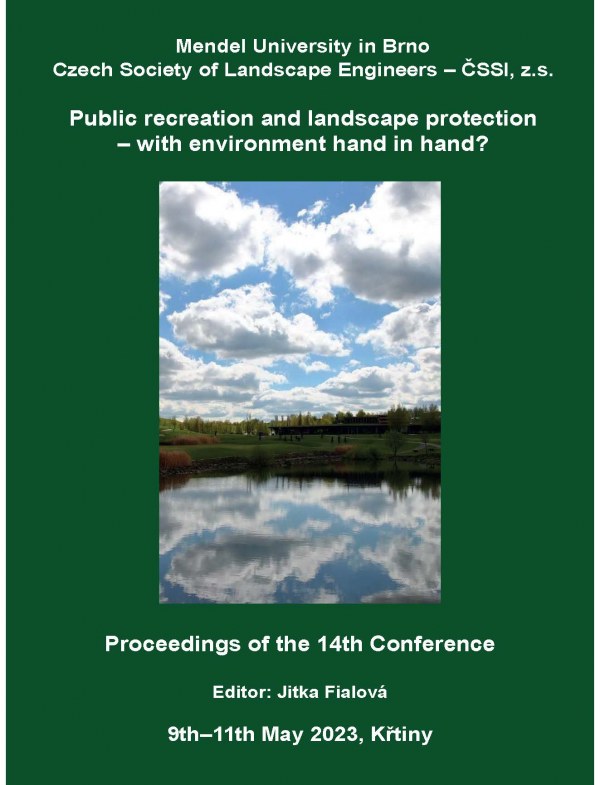
DOI: 10.11118/978-80-7509-904-4-0356
UNDERGROUND SPACES IN BOSONOŽSKÝ HÁJEK NATURE RESERVE AND THEIR GEOEDUCATION IMPORTANCE
- Karel Kirchner, František Kuda, Vít Baldík, Lucie Kubalíková
Bosonožský hájek Natural Reserve (Brno, South Moravia) is a very important site from the Earth Science point of view, however, its geodiversity values have been rather overlooked and omitted in the past (the object of legal protection is the occurrence of well-preserved forest ecosystems and endangered species). In the last decades, a series of field work and geophysical measurements has been carried out and the Earth Science phenomena have been identified and described here. These are represented by a dense network of gullies that developed in Pleistocene loess and that are both of natural and anthropogenic origin (some gullies probably developed along the old paths) and specific underground spaces (so called dugouts). Until now, the dugouts in South Moravia have been investigated mainly by archaeologists and those in Bosonožský hájek NR have not been described in detail yet. This brief contribution brings new information about three underground landforms and their possible relationship to the age and development of the gullies. The possibility of different interpretations of the origin of these specific landforms can be considered an opportunity in the field of Earth Science (geosciences) education and as an interesting complement of tourist and recreational activities on site.
Keywords: gully network, loess, dugouts, Earth Science education
pages: 356-359, Published: 2023, online: 2023
References
- Anonymous. (1996). Almanach obce Kníničky. Zastupitelstvo MČ Kníničky. 87 s.
- Buček, A. (2009). Bosonožský hájek jako příklad starobylého lesa. In: Dreslerová, J., Svátek, M. (eds.). Sborník příspěvků ze semináře Nízké a střední lesy v krajině. MZLU v Brně, pp. 6-7.
- Kirchner, K., Adam, D., Kuča, M., Bajer, A., Balková, M. (2018). Geomorfologický výzkum Bosonožského hájku v Brně - platforma pro poznání dopravních souvislostí lokality v minulosti. In: Martínek, J. (ed.). Výzkum historických cest v interdisciplinárním kontextu. Vlastivědný věstník moravský 70, Suppl 3, 125-134.
- Kirchner, K., Münster, P., Máčka, Z. (2011). Stržový systém v Bosonožském hájku - jedinečný geomorfologický fenomén západně od Brna. Geologické výzkumy na Moravě a Slezsku, 18(2), 33-36.
- Kirchner, K., Kubalíková, L. (2015). Geomythology: an useful tool for geoconservation and geotourism purposes. In: Fialová, J. and Pernicová, D. (eds.). Public recreation and landscape protection - with man hand in hand! Conference proceeding, Mendel University Brno, pp. 68-74.
- Kos, P. (2005) K moravským lochům. Forum urbes medii aevi, roč. 2, Brno, 166-183.
- Kubalíková, L., Kirchner, K., Bajer, A. (2017). Secondary geodiversity and its potential for urban geotourism: a case study from Brno city, Czech Republic. Quaestiones Geographicae, 56(3), 63-73. DOI: https://doi.org/10.1515/quageo-2017-0024
 Go to original source...
Go to original source... - Kubalíková, L., Kirchner, K., Kuda, F., Machar, I. (2019). The Role of Anthropogenic Landforms in Sustainable Landscape Management. Sustainability, 11(16), 4331. DOI: https://doi.org/10.3390/su11164331
 Go to original source...
Go to original source... - Kynclová, J. (2010). Topografická mapa chráněného území přírody. Diplomová práce. Ústav geodézie.FS VUT, Brno, 58 p.
- Münster, P. (2005). Stržová eroze v Bosonožském hájku. Bakalářská práce. Geografický ústav PřF MU, Brno, 51 p.
- Unger, J. (1987). Podzemní chodby v jihomoravské středověké a novověké vesnici, Archaeologica Historica, 12, 97-110.


